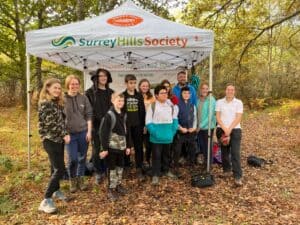
During October Half Term, we teamed up with Leatherhead Youth Project to carry out two days of practical conservation work as part of their ‘Making Good Project’. This is a project which aims to get young people engaged with communities through positive action projects.
The first day was spent at Newlands Corner, which is part of Surrey County Council’s Countryside Estate. This area is made up of both woodland and chalk grassland, which is very important for insects particularly butterflies. Here, the group met the Surrey Choices Growth Team. 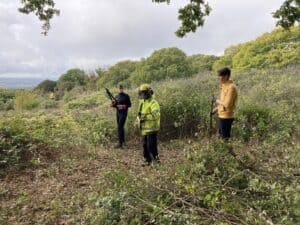 The Growth Team comprises of a group of adults with learning disabilities who carry out important conservation and access work across Surrey. They have been working up at Newlands Corner, to clear encroaching bramble and scrub from the grassland to encourage its restoration but also to help open up the viewpoint and create more places for people to sit.
The Growth Team comprises of a group of adults with learning disabilities who carry out important conservation and access work across Surrey. They have been working up at Newlands Corner, to clear encroaching bramble and scrub from the grassland to encourage its restoration but also to help open up the viewpoint and create more places for people to sit.
The group split into two, one group off to tackle the scrub with the Growth Team, while the other half of the group, worked on assembling a bug hotel using recycled signposts and wood from the countryside.
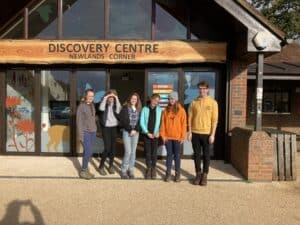
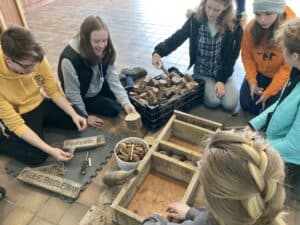
They did this in the recently opened Discovery Centre, which was a brilliant space and great for the group to experience. After a scenic lunch and quick mooch around the Dormice Trail, the groups switched over so that everyone could experience both activities.
On the second day, the young people met us at Banstead Heath for a day of tree popping alongside the Banstead Commons Conservators. Tree popping involves removing small unwanted trees by the root, to avoid them growing back. This is done by using a tree popper – essentially a giant lever which grips the tree in its jaw.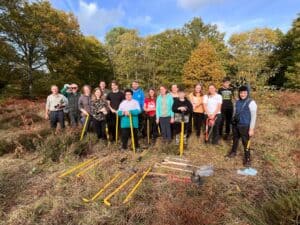
We were really impressed by the grit and determination of everyone and the competition to see who could achieve the longest root was met with enthusiasm. We were also very lucky to see an adder basking in the late October sunshine, proof that the work we were doing was important for the heathland species that live there.
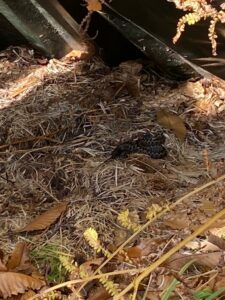
It was great for the young people to work in partnership with three different organisations, learning new skills and enjoying being together outside.
It was particularly rewarding for the Growth Team to be able to show the group from Leatherhead Youth Project what they do and for them to work together in partnership for the benefit of people and nature.
Thank you so much to everybody that was involved in making the two days a success!
Christa Emmett
Project and Volunteer Coordinator



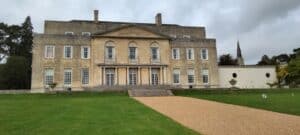
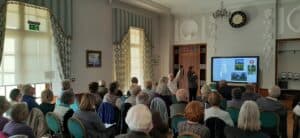 The Park and Garden’s Manager, Dan Ryan then gave a short talk about Capability Brown with particular reference to his design of the historic Gatton Park landscaped gardens.
The Park and Garden’s Manager, Dan Ryan then gave a short talk about Capability Brown with particular reference to his design of the historic Gatton Park landscaped gardens.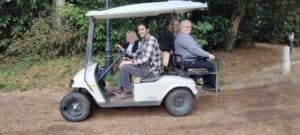
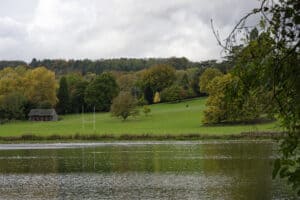
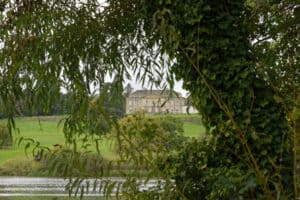
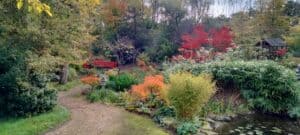 Walking through the park we went down to the Japanese Garden to see the changes that have recently been made, including new steps to improve access. The rock garden has also been recently renovated and it is around that area that there is a beautiful display of snowdrops in February.
Walking through the park we went down to the Japanese Garden to see the changes that have recently been made, including new steps to improve access. The rock garden has also been recently renovated and it is around that area that there is a beautiful display of snowdrops in February.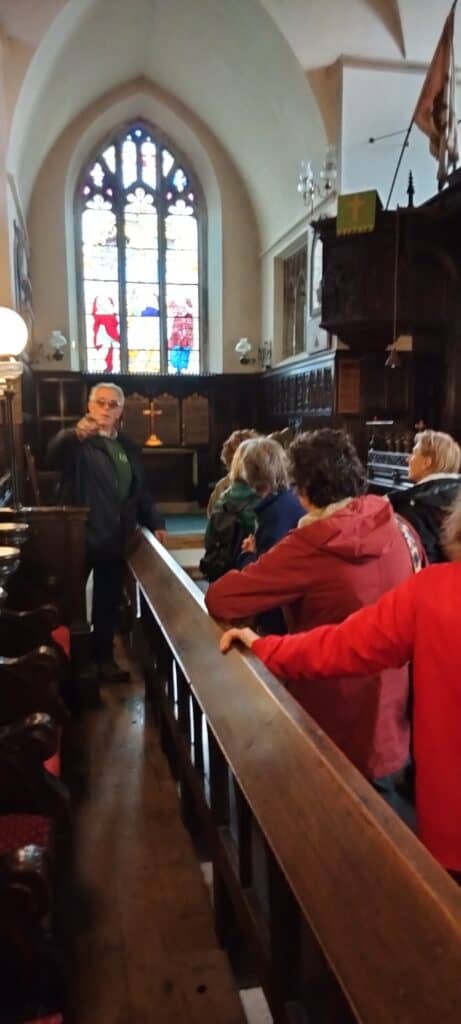
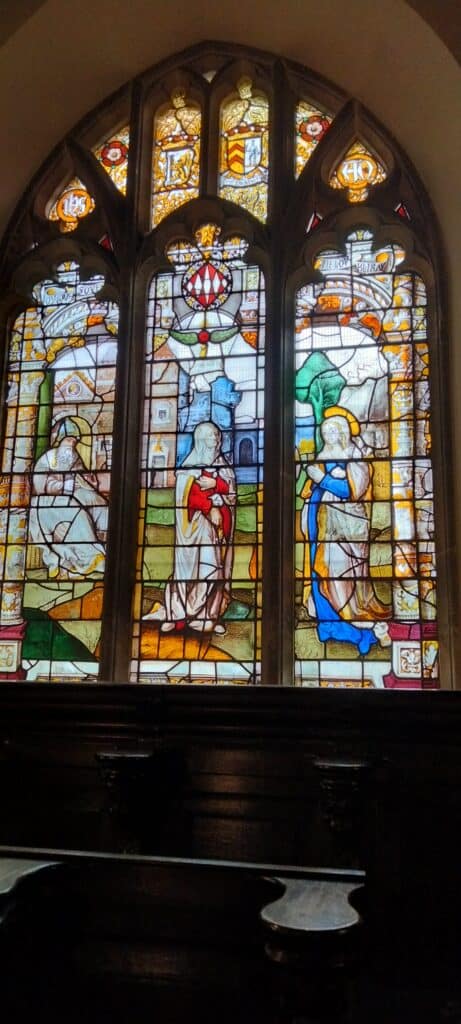
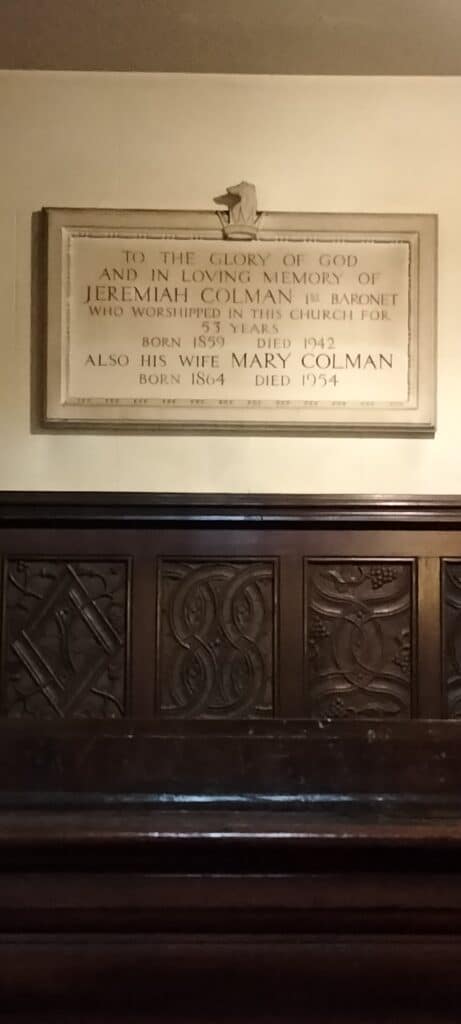
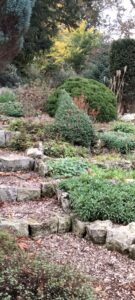
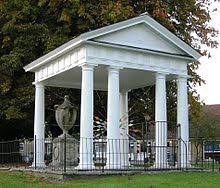
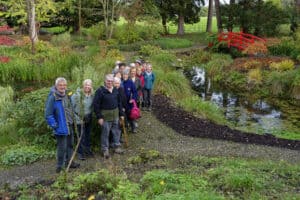

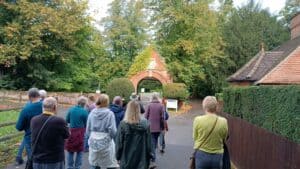
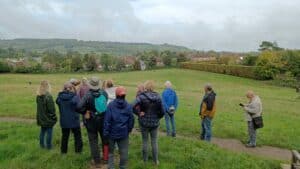
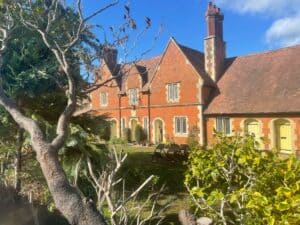
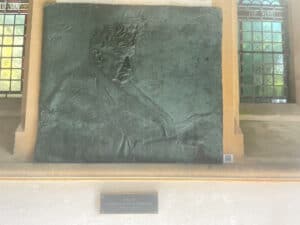
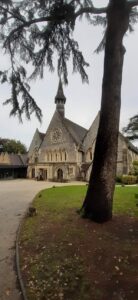
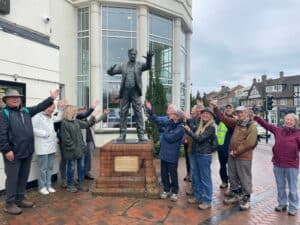

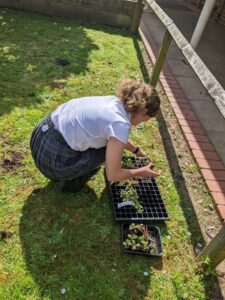
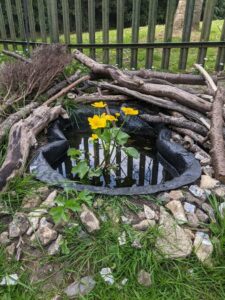
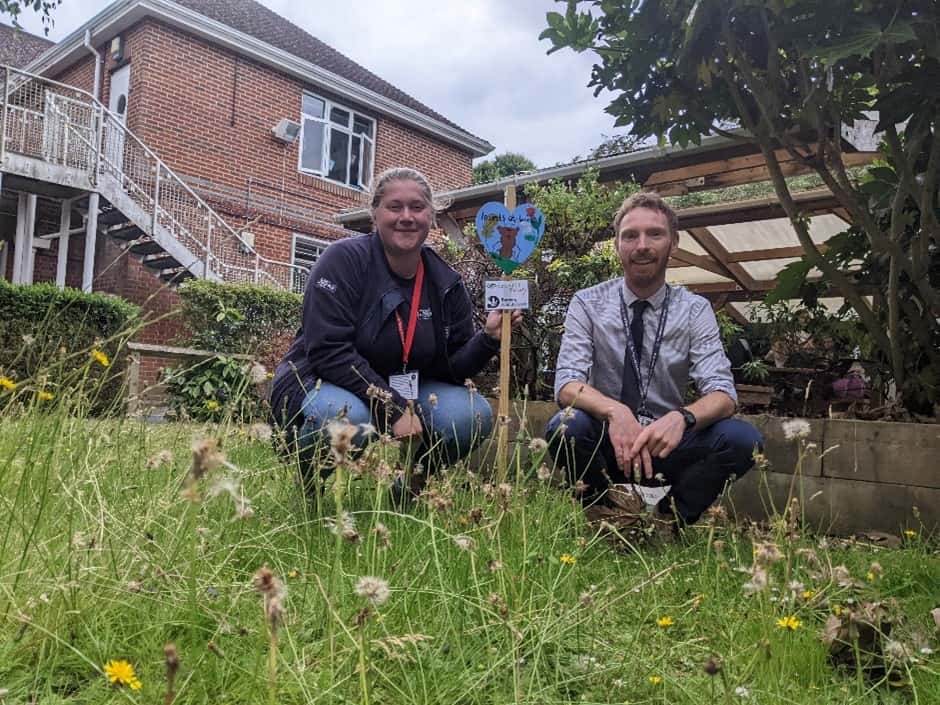
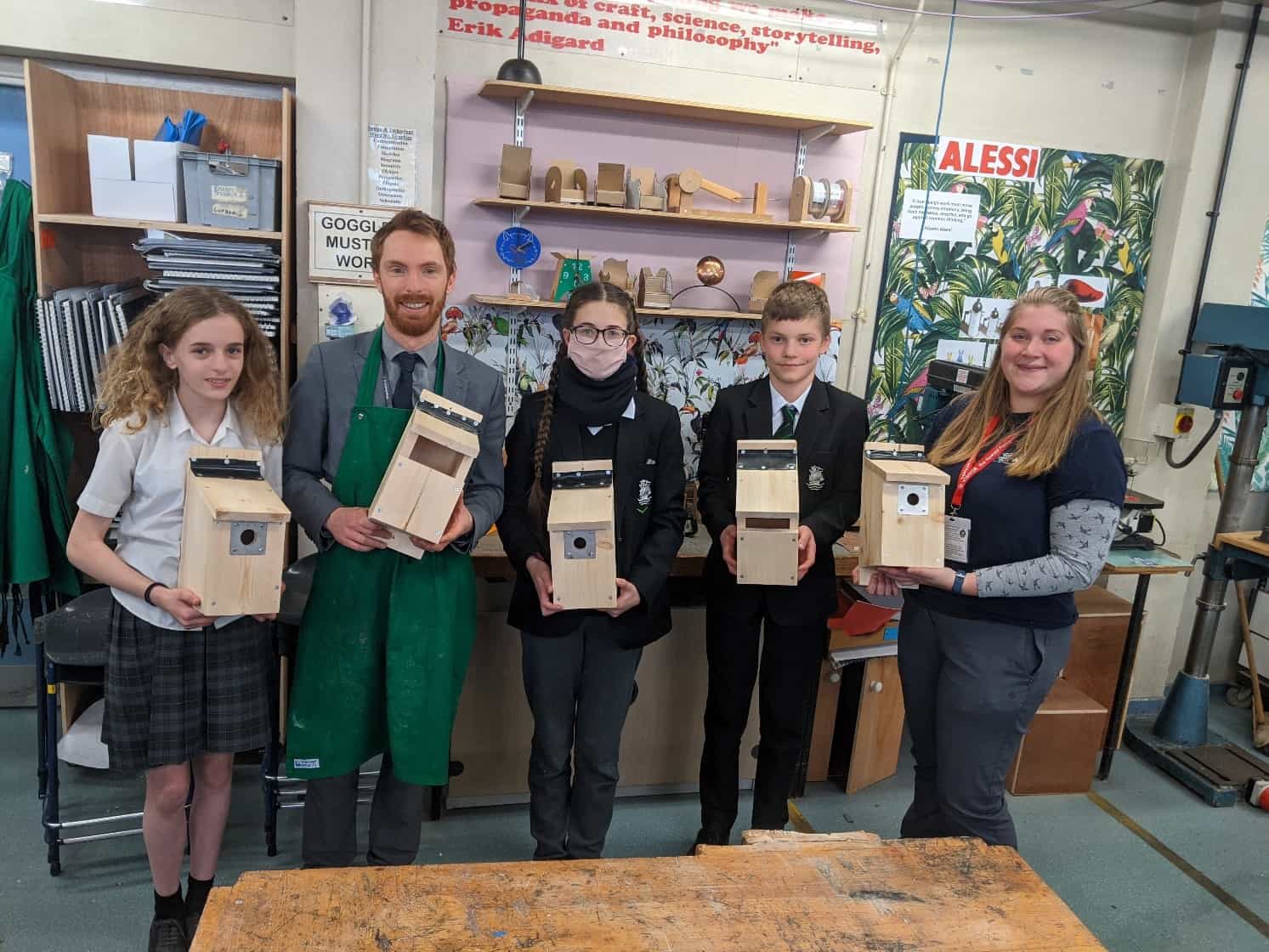
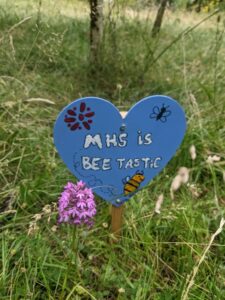
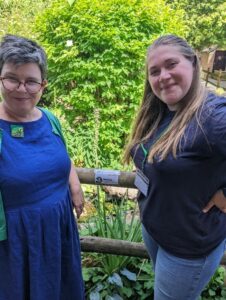 Year 2 planted pollinator friendly seeds, which they looked after for the summer term. The hope is that these will be planted in a new pollinator friendly flower bed!
Year 2 planted pollinator friendly seeds, which they looked after for the summer term. The hope is that these will be planted in a new pollinator friendly flower bed!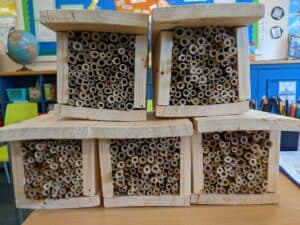
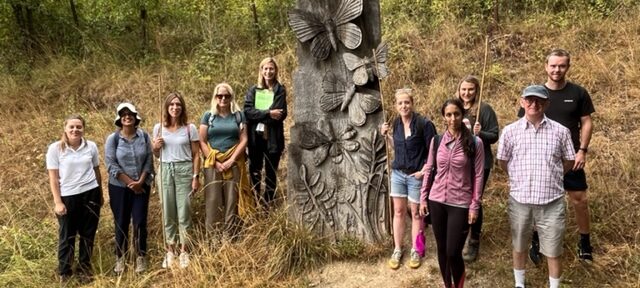
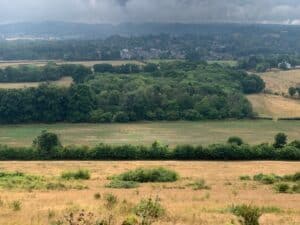 From the outset the Surrey Hills Society responded promptly, providing all the information that we requested, and offered to put together a day that factored in everyone’s needs. On the day itself we had a welcome briefing from the Chairman of the Society before making our way to the footpaths of the Surrey Hills. And wow – what a view!
From the outset the Surrey Hills Society responded promptly, providing all the information that we requested, and offered to put together a day that factored in everyone’s needs. On the day itself we had a welcome briefing from the Chairman of the Society before making our way to the footpaths of the Surrey Hills. And wow – what a view!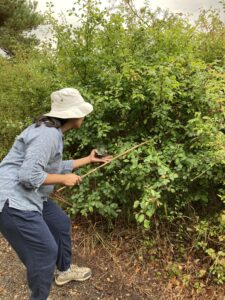
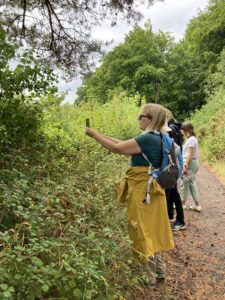 Split into two groups, our first task was to take part in the Great British Hedgerow Survey. Equipped with guides, diagrams and cane sticks to help us with accurate measuring, we analysed sections of hedgerows, identifying plant varieties, measuring height and depth, noting down any large gaps and answering multiple questions to help guide future conservation work. The Surrey Hills team explained how important the hedgerows are for food, shelter and access routes, with many species wholly dependant on them for their survival. We learnt a great deal about the difference types of species, both plants and animals, that make up a seemingly common hedgerow.
Split into two groups, our first task was to take part in the Great British Hedgerow Survey. Equipped with guides, diagrams and cane sticks to help us with accurate measuring, we analysed sections of hedgerows, identifying plant varieties, measuring height and depth, noting down any large gaps and answering multiple questions to help guide future conservation work. The Surrey Hills team explained how important the hedgerows are for food, shelter and access routes, with many species wholly dependant on them for their survival. We learnt a great deal about the difference types of species, both plants and animals, that make up a seemingly common hedgerow.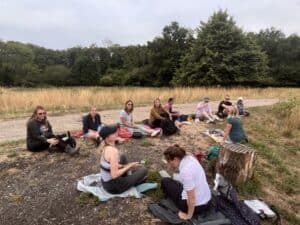
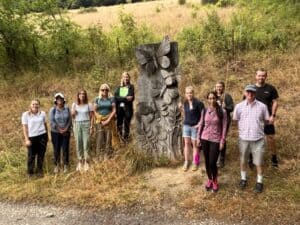 Some people may mistakenly believe those managing the nation’s motorways wouldn’t be the first to appreciate the nature and beauty of our landscapes, but that misconception could not be further from the truth. Indeed, it has long been a key priority for National Highways to manage the balance between the safety and convenience of those using our roads with the preservation of the landscapes they pass through. This trip highlighted the need for us to continue to prioritise that important work.
Some people may mistakenly believe those managing the nation’s motorways wouldn’t be the first to appreciate the nature and beauty of our landscapes, but that misconception could not be further from the truth. Indeed, it has long been a key priority for National Highways to manage the balance between the safety and convenience of those using our roads with the preservation of the landscapes they pass through. This trip highlighted the need for us to continue to prioritise that important work.
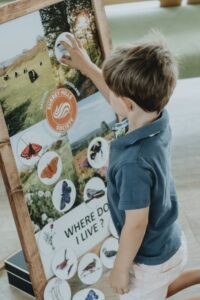
 There were lots of fun activities for the 19 children who attended including the ‘Where do I live’ magnetic board game supplied by Christa and Ash.
There were lots of fun activities for the 19 children who attended including the ‘Where do I live’ magnetic board game supplied by Christa and Ash.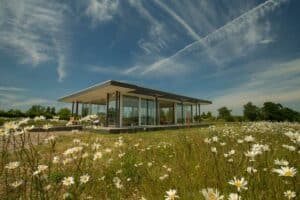 The children could then occupy themselves back at the spacious Pavilion with panoramic views of the reserve. They could make Pom Pom sensory balls, Salt Jars, stone painting and friendship bracelets. The Surrey Hills Society provided colouring pages of animals and a guide book of what is available in the Surrey Hills.
The children could then occupy themselves back at the spacious Pavilion with panoramic views of the reserve. They could make Pom Pom sensory balls, Salt Jars, stone painting and friendship bracelets. The Surrey Hills Society provided colouring pages of animals and a guide book of what is available in the Surrey Hills.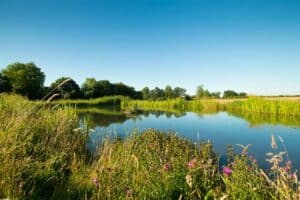

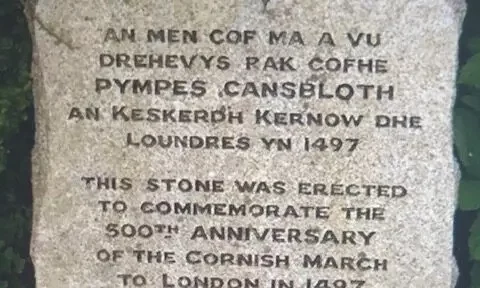
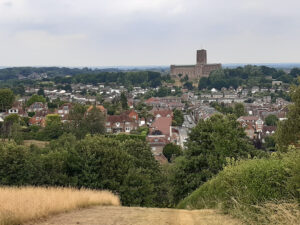
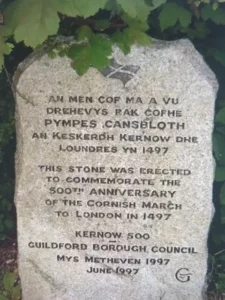 In 1997, a commemorative march named Keskerdh Kernow (Cornish: “Cornwall marches on”) retraced the original route of the rebels from St. Keverne to Blackheath to celebrate the 500th anniversary of the Cornish Rebellion. A statue depicting the Cornish leaders was unveiled at St. Keverne and commemorative plaques were unveiled at Guildford and on Blackheath.
In 1997, a commemorative march named Keskerdh Kernow (Cornish: “Cornwall marches on”) retraced the original route of the rebels from St. Keverne to Blackheath to celebrate the 500th anniversary of the Cornish Rebellion. A statue depicting the Cornish leaders was unveiled at St. Keverne and commemorative plaques were unveiled at Guildford and on Blackheath.
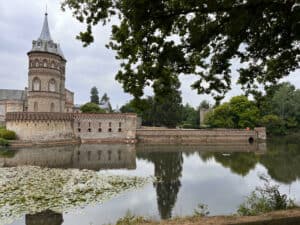
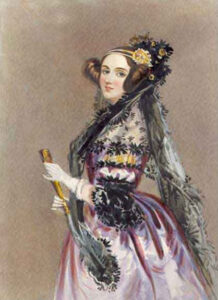
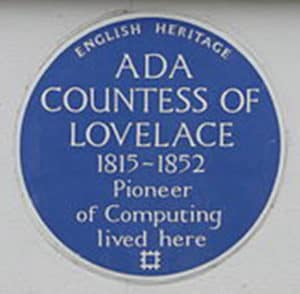 Surrey Hills Society members were recently treated to a fascinating talk on Ada Lovelace by local historian, Roger Price. This was followed by a tour of the garden before returning for lunch on the terrace. After lunch we were able to access the exquisitely decorated family chapel.
Surrey Hills Society members were recently treated to a fascinating talk on Ada Lovelace by local historian, Roger Price. This was followed by a tour of the garden before returning for lunch on the terrace. After lunch we were able to access the exquisitely decorated family chapel.

